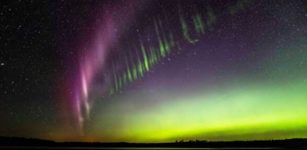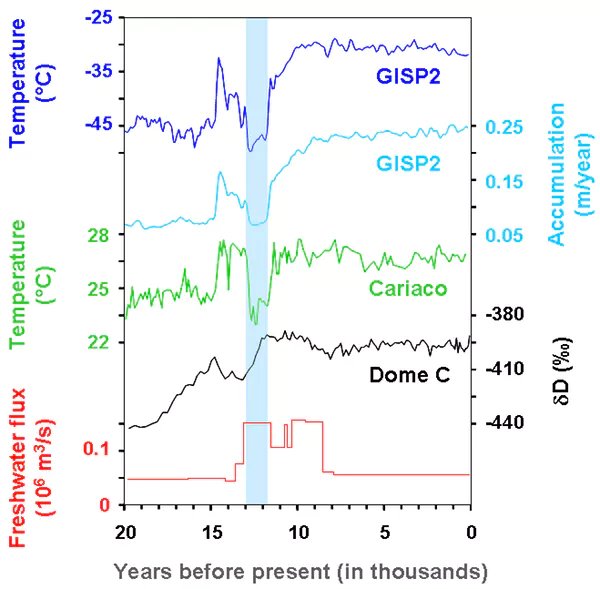Does The Climate In Game Of Thrones Make Sense?
MessageToEagle.com – The climate has been a persistent theme of Game of Thrones ever since Ned Stark (remember him?) told us “winter is coming” back at the start of season one. The Warden of the North was referring, of course, to the anticipated shift in Westerosi weather from a long summer to a brutal winter that can last for many years.
Someone knit this young man a nice woolly hat. HBO
An unusual or changing climate is a big deal. George R R Martin’s world bears many similarities to Medieval Europe, where changes to the climate influenced social and economic developments through impacts on water resources, crop development and the potential for famine.
We’re interested in whether Westeros’s climate science adds up, given what we’ve learned about how these things work here on Earth.
It’s not easy to understand the mechanisms driving the climate system given we can’t climb into the Game of Thrones universe and take measurements ourselves. It’s hard enough to get an accurate picture of what’s driving the world’s climate even with many thousands of thermometers, buoys and satellite readings all plugging data into modern supercomputers – a few old maesters communicating by raven are bound to struggle.
The fundamental difference between our world and that of Westeros is of course the presence of seasons. Here on Earth, seasons are caused by the planet orbiting around the sun, which constantly bombards us with sunlight. However the amount of sunlight received is not the same throughout the year.
You won’t see this in Westeros. Credit: Rhcastilhos
If you imagine the Earth with a long pole through its centre (with the top and bottom of the pole essentially the North and South Pole) and then tilt that by 23.5 degrees, the amount of sunlight received in the Northern and Southern Hemispheres will change throughout the year as the Earth orbits the Sun.
Clearly the unnamed planet on which Game of Thrones is set is missing this axis tilt – or some other crucial part of Earth’s climate system.
How longer seasons might work
The simplest explanation could be linked to spatial fluctuations in solar radiation (sunlight) received at the surface. A reduction in incoming solar radiation would mean more snow and ice likely remaining on the ground during the summer in Westeros’s far north. Compared to the more absorbent soil or rock, snow reflects more of the Sun’s energy back out to space where in effect it cannot warm the Earth‘s surface. So more snow leads to a cooler planet, which means more snow cover on previously snow-free regions, and so on. This process is known as the snow albedo feedback.
The collapse of large ice sheets north of the Wall could also rapidly destabilise ocean circulation, reducing northward heat transport and leading to the encroachment of snow and ice southwards towards King’s Landing.
What if all this ice suddenly melted? HBO
To descend into glacial conditions would require a large decrease in solar radiation received at certain locations on the Earth’s surface and likewise an increase would be needed to return to warmer conditions.
See also:
Can A Huge Ice Wall From Game Of Thrones Exist On Earth?
Melisandre, The Red Woman: The History Behind Game Of Thrones’ Mysterious Mystic
Asteroids Have Days And Nights But The Yarkovsky Effect Is Dangerous
This is roughly what happened during the switches between “glacial” and “interglacial” (milder) conditions throughout the past million years on Earth. This is controlled primarily by different orbital configurations known as “Milankovitch cycles”, which affect the seasonality and location of sunlight received on Earth.
However, these cycles are on the order of 23,000 to 100,000 years, whereas Game of Thrones seemingly has much shorter cycles of a decade or less.
When winter came back
Around 12,900 years ago there was a much more abrupt climate shift, known as the Younger Dryas, when a spell of near-glacial conditions interrupted a period of gradual rewarming after the last ice age peaked 21,000 years ago. The sudden thawing at the end of this cold spell happened in a matter of decades – a blink of an eye in geological terms – and led to the warm, interglacial conditions we still have today.
A particularly long and brutal winter? Younger Dryas cooling is visible in Greenland ice core records. NOAA
Various different theories have tried to explain why this spike occurred, including the sudden injection of freshwater into the North Atlantic from the outburst of North American glacial lakes, in response to the deglaciation, which destabilised ocean circulation by freshening the water and reducing ocean heat transport to the North Atlantic Ocean, cooling the regional climate.
Less likely explanations include shifts in the jet stream, volcanic eruptions blocking out the sun, or even an asteroid impact.
The shift from the Medieval Warm Period to the Little Ice Age that began around 1300 AD represents a more recent, and more subtle, example of a “quick” climate change. Although the overall temperature change wasn’t too severe – a Northern Hemisphere decrease of around 1˚C compared with today – it was enough to cause much harsher winters in Northern Europe.
None of these events indicate the abrupt transitions from long summers to long winters as described in Game of Thrones – and they still all happen on a much longer timescale than a Westeros winter. However they do demonstrate how extreme climate shifts are possible even on geologically short timescales.
Regardless of the causes of the long and erratic seasons, winter in Westeros won’t be much fun. It may even make the struggle for the Iron Throne between the various factions seem irrelevant.
Indeed the House of Stark’s motto: “winter is coming” may have a lesson for us here on Earth. Anthropogenic climate change is one of the biggest challenges facing humankind today and if left unmitigated the potential environmental impact on society may be far greater than any global recession. Stop worrying about the Iron Throne, everyone, winter is coming.
Written by Alex Farnsworth, Postdoctoral Research Assistant in Climatology, University of Bristol and Emma Stone Research Associate in Climate History, University of Bristol
This article is republished from The Conversation under a Creative Commons license. Read the original article.
Related Posts
-
 Sahara Desert Is Continuously Expanding – New Study Clearly Shows
No Comments | Mar 31, 2018
Sahara Desert Is Continuously Expanding – New Study Clearly Shows
No Comments | Mar 31, 2018 -
 Mysterious STEVE Light Emissions Emanate From Earth’s Magnetosphere
No Comments | Dec 14, 2021
Mysterious STEVE Light Emissions Emanate From Earth’s Magnetosphere
No Comments | Dec 14, 2021 -
 Multiple Cosmic Impacts Took Place On Earth 790,000 Years Ago
No Comments | Feb 26, 2016
Multiple Cosmic Impacts Took Place On Earth 790,000 Years Ago
No Comments | Feb 26, 2016 -
 Abu Dhabi Fossil Dunes May Have Inspired The Ancient Great Flood Story – Professor Says
No Comments | Jul 14, 2022
Abu Dhabi Fossil Dunes May Have Inspired The Ancient Great Flood Story – Professor Says
No Comments | Jul 14, 2022 -
 Stunning Aerial View Of The Karnak Temple
No Comments | Sep 5, 2015
Stunning Aerial View Of The Karnak Temple
No Comments | Sep 5, 2015 -
 Vishaps – Flying Serpents And Dragon-Like Beings – Ancient Flying Machines Of Armenia?
No Comments | Sep 7, 2015
Vishaps – Flying Serpents And Dragon-Like Beings – Ancient Flying Machines Of Armenia?
No Comments | Sep 7, 2015 -
 Study Reveals Threat Of Catastrophic Supervolcano Eruptions Ever-Present
No Comments | Sep 3, 2021
Study Reveals Threat Of Catastrophic Supervolcano Eruptions Ever-Present
No Comments | Sep 3, 2021 -
 Supay: God Of Death And Underworld And Ruler Over Race Of Demons According to Inca Mythology
No Comments | Jun 1, 2016
Supay: God Of Death And Underworld And Ruler Over Race Of Demons According to Inca Mythology
No Comments | Jun 1, 2016 -
 Ancient France Was Once An Exotic Rainforest And Had Amazon-Like Jungles
No Comments | Sep 18, 2016
Ancient France Was Once An Exotic Rainforest And Had Amazon-Like Jungles
No Comments | Sep 18, 2016 -
 Bizarre Ancient Capuchin Crypt ‘Decorated’ With The Bones Of 4,000 Monks
No Comments | Aug 20, 2016
Bizarre Ancient Capuchin Crypt ‘Decorated’ With The Bones Of 4,000 Monks
No Comments | Aug 20, 2016




